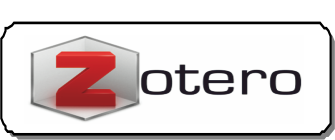Innovations of Integrated Islamic Education in Indonesia and Brunei Darussalam: Trends, Challenges, and Opportunities
Abstract
Integrated Islamic education has become an integral part of efforts to innovate in religious education that aligns with the progress of the times. This study presents a systematic literature review on educational innovation through integrated Islamic education. The method employed in this research is Systematic Literature Review (SLR), utilizing the PRISMA protocol with its stages, including identification, screening, eligibility, inclusion, abstraction, and data analysis. The process is assisted by the applications Publish or Perish, Zotero, and the PRISMA Flow Diagram on the web. The research findings indicate that the distribution of studies on integrated Islamic education in Indonesia amounts to 21 articles, while in Brunei Darussalam, there are 3 articles. As for integrated Islamic education in Indonesia, it can be observed in the form of improvisation of learning models, internalization of Islamic values in general content, curriculum redesign, and student activity management. Meanwhile, in Brunei Darussalam, the Malay Islamic Monarchy (MIB) concept is employed, and this concept has led to the implementation of the SPN-21 curriculum policy, which aims to create individuals who are faithful, pious, morally upright, and proficient in technology.
References
Abubakar, A. (2019). Pengembangan Pendidikan Agama Islam (PAI) pada Kurikulum SMP Islam Terpadu Al Fahmi Palu. Al-Qalam, 25(1), 119–133. https://doi.org/10.31969/alq.v25i1.697.
Akhiyat, A. (2016). Akseptabilitas Konsep Integrasi Pendidikan Islam dalam Sistem Pendidikan Nasional. Didaktika Religia, 4(2), 39–59. https://doi.org/10.30762/didaktika.v4.i2.p39-59.2016.
Amelia, U. (2023). Tantangan Pembelajaran Era Society 5.0 dalam Perspektif Manajemen Pendidikan. Al-Marsus : Jurnal Manajemen Pendidikan Islam, 1(1), 68–82. https://doi.org/10.30983/al-marsus.v1i1.6415.
Ardiwansyah, B., Cahyono, H., & Iswati, I. (2023). Potret Gerakan Intelektual dan Institusi Pendidikan Islam di Indonesia Beserta Faktor-Faktor yang Mempengaruhinya. At-Tajdid: Jurnal Pendidikan Dan Pemikiran Islam, 7(1), 158–178. http://dx.doi.org/10.24127/att.v7i1.2692.
Basri, H. (2024). Integrating Islamic Values into Modern Educational Curricula: Challenges and Opportunities. Journa of Social Science, 1(5), 304–317.
Darsyah, S. (2023). Analisis Kebijakan Kurikulum Pendidikan Islam Di Brunei Darussalam. Jurnal Pendidikan Dan Konseling (JPDK), 5(2), 5942–5950. https://doi.org/10.31004/jpdk.v5i2.15513.
Dewi, E. R., & Alam, A. A. (2020). Transformation Model for Character Education of Students. Cypriot Journal of Educational Sciences, 15(5), 1228–1237.
Fadhlina Harisnur & Suriana. (2021). Pengembangan Kurikulum Pendidikan Agama Islam (PAI) Jaringan Sekolah Islam Terpadu (JSIT) Tingkat Sekolah Dasar. Genderang Asa: Journal of Primary Education, 2(2), 52–65. https://doi.org/10.47766/ga.v2i2.156.
Faisol, A., Padil, M., & Barizi, A. (2024). Implementation of Character-Based Holistic Education in Islamic Boarding School Educational Institutions. Enrichment: Journal of Multidisciplinary Research and Development, 2(9).
Fatimah, F., & Winarti, E. (2022). Integrasi Imtak dan Iptek: Landasan dan Faktor Kunci Sukses Penerapannya dalam Pendidikan Islam. Tarbiyatuna: Jurnal Pendidikan …. http://ejournal.kopertais4.or.id/mataraman/index.php/tarbiyatuna/article/view/5050.
Hadi, S. (2020). Systematic Review: Meta Sintesis untuk Riset Perilaku Organisasional (1st ed.). Viva Victory Abadi.
Hamami, T., & Nuryana, Z. (2022). A Holistic–Integrative Approach of the Muhammadiyah Education System in Indonesia. HTS Teologiese Studies/Theological Studies, 78(4).
Hanum, R. (2019). Integrasi Ilmu dalam Kurikulum Sekolah Islam Terpadu di Aceh (Studi Kasus SD IT Aceh Besar dan Bireuen). PIONIR: Jurnal Pendidikan, 8(1), 40–55. http://dx.doi.org/10.22373/pjp.v8i1.4586.
Harmonedi, H., & Zalnur, M. (2020). Eksistensi Pendidikan Islam Dalam Bingkai Regulasi Pendidikan Di Indonesia Pasca Kemerdekaan. Belajea; Jurnal Pendidikan Islam, 5(2), 309–338. https://doi.org/10.29240/belajea.v5i2.1331.
Herawati, S., Rahman, I. K., & Supraha, W. (2023). Self-Education for Elementary School Orphanage Children. Al-Liqo: Jurnal Pendidikan Islam, 8(1), 67–79. https://doi.org/10.46963/alliqo.v8i1.590.
Hidayatulloh, T., Saumantri, T., & Ramdani, Z. (2024). Integrating Living Values Education into Indonesian Islamic Schools: An Innovation in Character Building. EDUKASI: Jurnal Penelitian Pendidikan Agama Dan Keagamaan, 22(1), 137–152.
Khasanah, N., Irwan Hamzani, A., & Aravik, H. (2023). Religious Moderation in the Islamic Education System in Indonesia. QALAMUNA: Jurnal Pendidikan, Sosial, Dan Agama, 15(1), 629–642. https://doi.org/10.37680/qalamuna.v15i1.4115.
Kurniawan, H., & Ariza, F. N. (2020). Sekolah Islam Terpadu: Perkembangan, Konsep, dan Implementasi. ITTIHAD: Jurnal Pendidikan, 4(1), 81–88.
Mala, A., & Hunaida, W. L. (2023). Exploring the role of religious moderation in Islamic education: A comprehensive analysis of its unifying potential and practical applications. Jurnal Pendidikan Agama Islam (Journal of Islamic Education Studies), 11(2), 173–196.
Mas’ud, A., Fuad, Ah. Z., & Zaini, A. (2019). Evolution and Orientation of Islamic Education in Indonesia and Malaysia. Journal of Indonesian Islam, 13(1), 21. https://doi.org/10.15642/JIIS.2019.13.1.21-49.
Moslimany, R., Otaibi, A., & Shaikh, F. (2024). Designing a Holistic Curriculum: Challenges and Opportunities in Islamic Eeducation. Journal on Islamic Studies, 1(1), 52–73. https://doi.org/10.35335/beztg009.
Muadin, A., Ilyasin, M., & Saleah, P. (2023). Innovation in Pesantren Development as a Perspective Study of the Quality Development of Pesantren in the Era of Disruption 4.0. SYAMIL: Jurnal Pendidikan Agama Islam (Journal of Islamic Education), 11(2), 155–166.
Muhsan, M., & Haris, A. (2022). Multidisciplinary Approach in Islamic Religious Education: The Formation of a Holistic and Responsive Muslim Community to the Dynamics of Modern Life. QALAMUNA: Jurnal Pendidikan, Sosial, Dan Agama, 14(1), 597–612.
Muluk, M. S. A. A. (2023). Nilai-Nilai Mib Membentuk Negara Zikir Menurut Perspektif Al Quran. Proceedings Borneo Islamic International Conference, 14. https://majmuah.com/journal/index.php/kaib1/article/view/365.
Muslim, B., Nahadi, N., & Anwar, S. (2023). Integration Science And Islam: A New Product To Facilitate Teaching And Learning In College. Jurnal As-Salam, Query date: 2023-11-21 15:27:47. https://www.jurnal-assalam.org/index.php/JAS/article/view/649
Nasucha, M. R., Khozin, K., & Thoifah, I. (2023). Synergizing Islamic Religious Education and Scientific Learning in the 21st Century: A Systematic Review of Literature. Jurnal Pendidikan Agama Islam (Journal of Islamic Education Studies), 11(1), 109–130.
Nasution, S. (2022). Sejarah Islam Asia Tenggara (Cetakan ke-1). PT RajaGrafindo Persada.
Pishghadam, R., Faribi, M., Kolahi Ahari, M., Shadloo, F., Gholami, M. J., & Shayesteh, S. (2022). Intelligence, Emotional Intelligence, and Emo-Sensory Intelligence: Which One is a Better Predictor of University Students’ Academic Success? Frontiers in Psychology, 13, 988–995. https://doi.org/10.3389/fpsyg.2022.995988
Pitriyati, N., Nuryani, N., Hilmin, H., & Noviani, D. (2023). Perbandingan Sistem Pendidikan Islam Brunei Darussalam dan Indonesia. JSII: Jurnal Studi Islam Indonesia, 1(1), 87–104. https://doi.org/10.61930/jsii.v1i1.120
Rofi’ah, S. (2021). Pendidikan Islam Nusantara: Menggali Fenomena, Tradisi dan Epistemologi ( (Cetakan Pertama). Akademia Pustaka.
Rossidy, I., Barizi, A., Haris, A., & Wahyuni, E. N. (2023). Concept of Islamic Integrated Education and Its Implementation at Ar-Rohmah Educational Institute Malang. Didaktika Religia, 11(1), 61–84. https://doi.org/10.30762/didaktika.v11i1.3367.
Rosyad, A. M., & Maarif, M. A. (2020). Paradigma Pendidikan Demokrasi dan Pendidikan Islam dalam Menghadapi Tantangan Globalisasi di Indonesia. Nazhruna: Jurnal Pendidikan Islam, 3(1), 75–99. https://doi.org/10.31538/nzh.v3i1.491.
Rusydiyah, E. F., Rahman, Moh. R., Wulandari, L., & Abidin, A. Z. (2023). Integration of Islamic Religious Education Learning in Mathematics as an Effort to Strengthen Student Character Education. TADRIS: Jurnal Pendidikan Islam, 18(1), 1–20. https://doi.org/10.19105/tjpi.v18i1.7073
Saputra, H. (2018). Perbandingan Pengembangan Organisasi Lembaga Pendidikan di Negara Se Asia Tenggara Dengan Pendidikan Setingkat di Indonesia. Az Zikri, 19(1), 83–108.
Septemiarti, I., & Hairunnas, H. (2023). Analisis Kebijakan Pendidikan Islam di Brunei. Jurnal Pendidikan Dan Konseling (JPDK), 5(1), 4967–4973. https://doi.org/10.31004/jpdk.v5i1.11786.
Suharto, B. (Ed.). (2019). Moderasi Beragama: Dari Indonesia untuk Dunia (Cetakan I). LKiS.
Sukhoiri, S. (2022). Sekolah Islam Terpadu: Reformasi Baru Lembaga Pendidikan Islam di Indonesia. Jurnal Pendidikan Indonesia : Teori, Penelitian, Dan Inovasi, 2(5), 27–36. https://doi.org/10.59818/jpi.v2i5.246.
Susiba, S., Hairunnas, H., & Helmiati, H. (2022). Analisis Kebijakan Kurikulum Sistem Pendidikan Nasional (SPN)-21: Peluang dan Tantangannya Bagi Pendidikan Islam di Brunei Darussalam. Geneologi PAI: Jurnal Pendidikan Agama Islam, 9(2), 210–219.
Taufik, M. (2020). Strategic Role of Islamic Religious Education in Strengthening Character Education in the Era of Industrial Revolution 4.0. Jurnal Ilmiah Islam Futura, 20(1), 86–104.
Umam, C. (2020). Inovasi Pendidikan Islam: Strategi dan Metode Pembelajaran PAI di Sekolah Umum. CV. DOTPLUS Publisher.
Copyright (c) 2025 Ely Fitriani, Evi Fatimatur Rusydiyah, Siti Amaliati, Nurisan Doloh, Fareesah Koowa

This work is licensed under a Creative Commons Attribution-ShareAlike 4.0 International License.
Please find the rights and licenses in SYAMIL Jurnal Pendidikan Agama Islam (Journal of Islamic Education). By submitting the article/manuscript of the article, the author(s) agree with this policy. No specific document sign-off is required.
1. License
The non-commercial use of the article will be governed by the Creative Commons Attribution license as currently displayed on Creative Commons Attribution-ShareAlike 4.0 International License.
2. Author(s)' Warranties
The author warrants that the article is original, written by stated author(s), has not been published before, contains no unlawful statements, does not infringe the rights of others, is subject to copyright that is vested exclusively in the author and free of any third party rights, and that any necessary written permissions to quote from other sources have been obtained by the author(s).
3. User/Public Rights
SYAMIL spirit is to disseminate articles published are as free as possible. Under the Creative Commons license, SYAMIL permits users to copy, distribute, display, and perform the work for non-commercial purposes only. Users will also need to attribute authors and Register on distributing works in the journal and other media of publications. Unless otherwise stated, the authors are public entities as soon as their articles got published.
4. Rights of Authors
Authors retain all their rights to the published works, such as (but not limited to) the following rights;
Copyright and other proprietary rights relating to the article, such as patent rights,
The right to use the substance of the article in own future works, including lectures and books,
The right to reproduce the article for own purposes,
The right to self-archive the article (please read out deposit policy),
The right to enter into separate, additional contractual arrangements for the non-exclusive distribution of the article's published version (e.g., post it to an institutional repository or publish it in a book), with an acknowledgment of its initial publication in this journal (SYAMIL Jurnal Pendidikan Agama Islam (Journal of Islamic Education)).
5. Co-Authorship
If the article was jointly prepared by more than one author, any authors submitting the manuscript warrants that he/she has been authorized by all co-authors to be agreed on this copyright and license notice (agreement) on their behalf, and agrees to inform his/her co-authors of the terms of this policy. SYAMIL will not be held liable for anything that may arise due to the author(s) internal dispute. SYAMIL will only communicate with the corresponding author.
6. Royalties
Being an open accessed journal and disseminating articles for free under the Creative Commons license term mentioned, author(s) aware that SYAMIL entitles the author(s) to no royalties or other fees.
7. Miscellaneous
SYAMIL will publish the article (or have it published) in the journal if the article’s editorial process is successfully completed. SYAMIL editors may modify the article to a style of punctuation, spelling, capitalization, referencing and usage that deems appropriate. The author acknowledges that the article may be published so that it will be publicly accessible and such access will be free of charge for the readers as mentioned in point 3.












